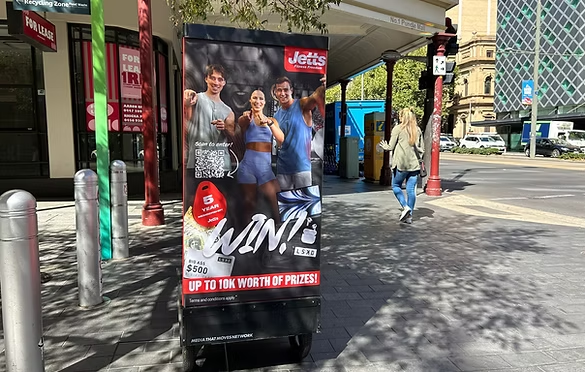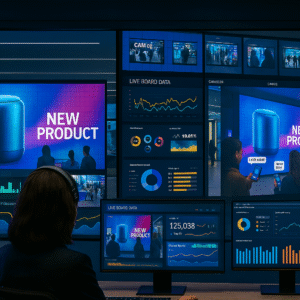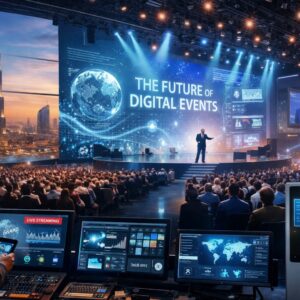
In today’s world of marketing saturation, businesses are constantly seeking innovative ways to stand out in busy urban environments. Traditional advertising mediums like posters and billboards are often overlooked as people rush through their daily routines. However, mobile advertising has introduced a more dynamic and engaging option that brings the message directly to the audience. Among these creative approaches, bike billboards have emerged as an attention-grabbing and eco-friendly advertising solution that effectively cuts through the noise of crowded public spaces.
The Concept of Bike Billboards
Bike billboards are mobile advertising displays mounted on bicycles, designed to travel through areas with high pedestrian or vehicle traffic. They combine motion, visibility, and creativity to engage audiences in real time. Unlike stationary signs that rely on a person’s proximity to a particular location, bike billboards actively go where the people are whether at parks, shopping districts, festivals, or busy city centers.
The key advantage lies in their mobility. Riders can maneuver through streets, stop at key intersections, or position themselves at events with maximum footfall. This ability to adapt locations allows brands to increase visibility and exposure while minimizing advertising waste.
Why Mobility Matters in Advertising
In densely populated areas, people are constantly moving, and so should your message. Mobile marketing thrives in environments where traditional ads struggle for visibility. A bike billboard becomes part of the flow of traffic, subtly integrating into people’s surroundings while maintaining a strong visual impact.
Because the billboard moves with the cyclist, it naturally attracts curiosity and attention. Human eyes are drawn to motion, and this movement turns an otherwise static message into a dynamic storytelling experience. As the cyclist passes through neighborhoods or crowds, the brand message travels with them building impressions with every turn of the wheel.
Eco-Friendly and Cost-Effective Advertising
Sustainability plays an increasingly important role in modern advertising decisions. Bike billboards are powered solely by human energy, making them a zero-emission marketing tool. For environmentally conscious brands, this aligns their promotional strategy with values of responsibility and green innovation.
Additionally, the cost of operating a bike billboard campaign is significantly lower than running digital or television ads. The investment covers setup, creative design, and cyclist wages, but eliminates high placement fees typical of traditional outdoor advertising. This affordability makes them especially appealing to startups, local businesses, and organizations with smaller marketing budgets.
Maximizing Visibility in Public Spaces
Crowded spaces such as downtown areas, concerts, and sporting events provide fertile ground for impactful advertising. The challenge lies in breaking through distractions and engaging people for more than just a fleeting moment. Bike billboards achieve this through several strategies:
- Strategic Route Planning – Marketers select routes with heavy pedestrian traffic or event-based gatherings to ensure the message reaches the right audience.
- Vibrant, Creative Designs – The visual design plays a vital role in capturing attention. Bright colors, clear messaging, and bold graphics make a billboard easy to recognize even from a distance.
- Interactivity – Some campaigns integrate QR codes or social media prompts, allowing pedestrians to immediately engage with the brand digitally.
- Human Connection – Since the billboard is operated by a cyclist, the campaign naturally feels approachable. Riders often interact with passersby, distribute samples, or provide information, creating an experience that traditional signage cannot replicate.
The Psychology Behind Movement and Engagement
Psychologically, humans respond more strongly to moving objects than static ones. Motion commands attention because it implies activity and relevance. In busy areas filled with signs, traffic, and noise, a moving advertisement cuts through sensory overload and delivers a focused message.
Bike billboards capitalize on this principle by combining visual motion with environmental presence. The moving element not only grabs attention but also helps the message linger in the viewer’s memory. Repetition across different routes and times of day reinforces brand recall without appearing repetitive or intrusive.
Integrating with Modern Marketing Strategies
Bike billboard advertising fits seamlessly into broader marketing campaigns. It can complement digital efforts by driving traffic to online platforms through URLs, hashtags, or promotional codes displayed on the moving signs. For instance, a business promoting a new app or restaurant launch can sync their street campaign with online social media content, creating a unified brand experience.
Many companies have also begun combining mobile displays with a digital advertising billboard strategy. This approach merges physical visibility with digital amplification—using geotargeted ads to reach users who may have encountered the mobile billboard in real life. The result is an integrated, data-driven marketing approach that maximizes exposure both offline and online.
Measuring Campaign Success
One of the strengths of bike billboard marketing is its measurable impact. GPS tracking and mobile data can provide insights into the routes covered, audience demographics, and engagement metrics. Feedback from on-ground interactions also offers valuable information about public perception and brand visibility.
Compared to traditional outdoor advertisements, this form of marketing offers flexibility and immediate performance adjustments. Routes and timings can be modified mid-campaign to focus on areas with higher engagement, ensuring optimal reach and return on investment.
Conclusion
In an age where consumers are bombarded with advertisements at every turn, mobility and creativity are the keys to breaking through the clutter. Bike billboards combine eco-conscious design, motion-based visibility, and direct audience engagement to create a memorable and effective advertising experience. Whether paired with a digital advertising billboard campaign or used independently, they provide an innovative way for brands to stay visible, relevant, and unforgettable in today’s crowded public spaces.





